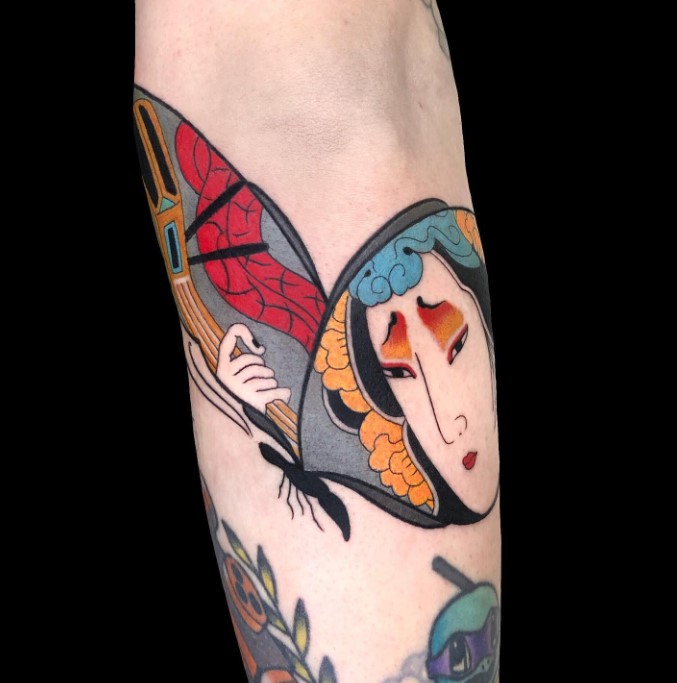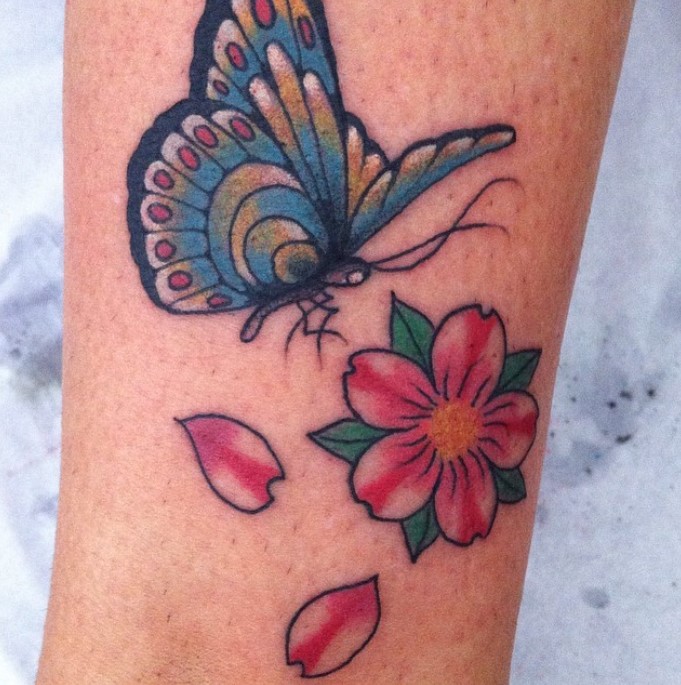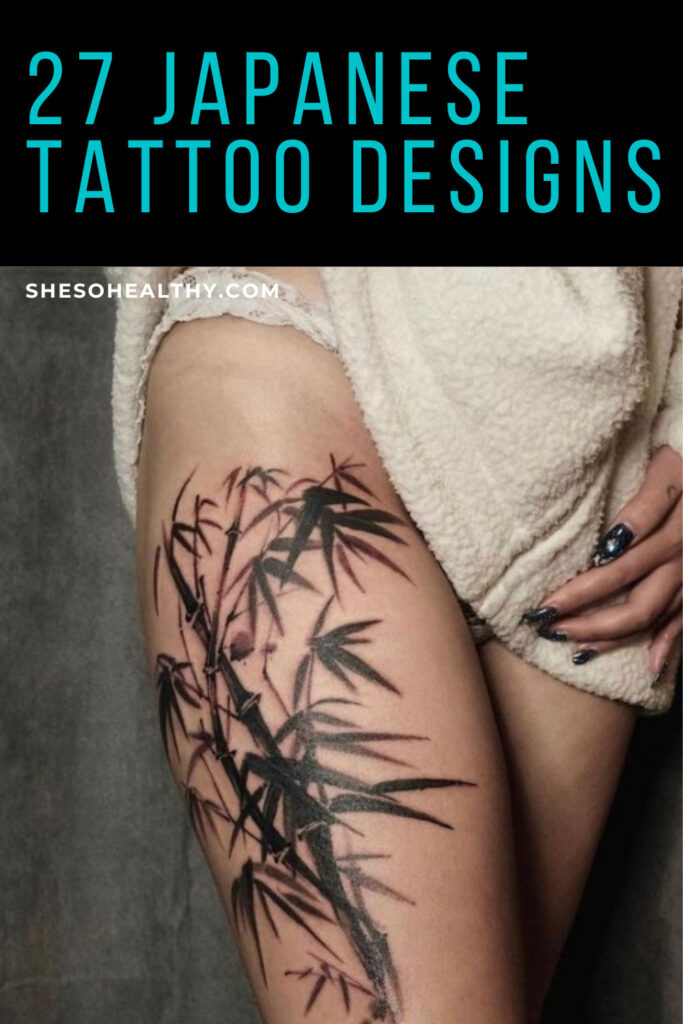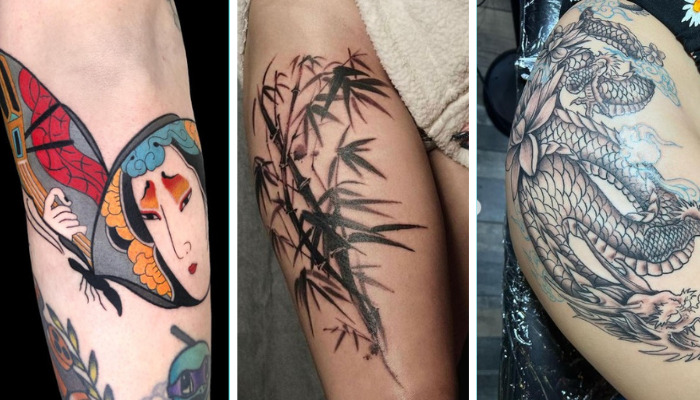- Types of Japanese Tattoos
- History of Japanese Tattoos
- The Japanese Dragon Tattoo
- What are the different Types of Japanese Dragons?
- Dragons in the Asian Culture
- Common Japanese Tattoos for Females
- Japanese Tattoo Designs for Inspiration
- Japanese Bamboo Tattoo on Thigh
- Bamboo Tattoo on Arm
- Bamboo Tattoo with Koi Fish
- Large Koi Fish Tattoo on Arm
- Koi Fish and Lotus Flower Yin Yang Tattoo
- Small Koi Fish Yin Yang Tattoos
- Japanese Phoenix Tattoo
- Japanese Dragon Tattoos on Thigh
- Japanese Dragon Tattoo with Cherry Blossoms (Sakura)
- Japanese Dragon Tattoo
- Japanese Cherry Blossom (Sakura) Tattoo on Arm
- Sakura or Cherry Blossom Tattoo on Arm
- Lotus Flower Tattoo on Chest
- Pretty Peony Flower Tattoos on Thigh
- Japanese Peony Flower Tattoo
- Lotus Flower Tattoo on Abdomen
- Koi Fish Yin Yang Tattoo on Back
- Geisha Tattoos on Thigh
- Japanese Phoenix Tattoo on Arm
- Large Phoenix Tattoo on Back
- Butterfly Koi Fish Japanese Tattoo
- Japanese Butterfly Tattoo Designs
Japanese tattoos, also known as irezumi, are a traditional form of tattooing in Japan. These tattoos are typically large, elaborate designs that cover a significant portion of the body and are done using the traditional hand-poking method, also known as tebori.
The designs for Japanese tattoos are typically inspired by mythological creatures, such as dragons and koi fish, as well as nature motifs like cherry blossoms, lotus flowers, and bamboo. They may also include motifs from Japanese folklore and culture, such as samurai warriors, geishas, and other cultural icons.
Japanese tattoos are usually done in black ink, although color is sometimes used to highlight certain details or to create a more vibrant overall effect. The tattoos are typically done in a bold, graphic style, with thick lines and a strong sense of movement.
The symbolism and meaning of Japanese tattoos vary depending on the specific design chosen. Some designs may be chosen for their aesthetic appeal, while others may be chosen for their symbolic meaning. For example, a dragon tattoo may symbolize strength and power, while a cherry blossom tattoo may represent the fleeting nature of life.
Japanese tattoos are a unique and highly stylized form of tattoo art that have a long history and a deep cultural significance in Japan. They are often seen as a form of self-expression and a way to pay tribute to the country’s rich cultural heritage.
Types of Japanese Tattoos
Japanese tattoos, also known as “irezumi,” are a traditional form of tattooing in Japan that have a long and complex history. There are several types of Japanese tattoos, including the following:
- Horimono: This type of tattoo is typically large and covers a significant portion of the body, such as the back, chest, or legs. It often features highly detailed and intricate designs that are inspired by traditional Japanese art, folklore, and mythology.
- Irezumi: This type of tattoo is smaller and more contained than horimono, and is typically found on the arms, legs, or chest. It often features bold, graphic designs that are inspired by traditional Japanese art, such as dragons, tigers, and other animals.
- Tebori: This is a traditional Japanese tattooing technique that involves hand-poking the tattoo design into the skin using a needle. This method is time-consuming and requires a high level of skill and precision.
- Gyaru: This type of tattoo is typically associated with the gyaru subculture in Japan, which is known for its colorful and flashy fashion style. Gyaru tattoos are often smaller and more subtle than other types of Japanese tattoos, and are often placed on the neck or wrist.
Overall, Japanese tattoos are known for their intricate and highly detailed designs, which often incorporate elements of traditional Japanese art, folklore, and mythology. They are also associated with a deep cultural significance and are often considered a form of body art and self-expression in Japan.
History of Japanese Tattoos
Japanese tattoos, also known as irezumi, have a long and complex history that is closely tied to the culture and traditions of Japan.
The origins of irezumi can be traced back to the Jōmon period (14,000-300 BC) in Japan, when people would tattoo their bodies with simple designs using fish bones or other sharp objects to puncture the skin and apply ink. These tattoos were believed to have spiritual or ceremonial significance, and were often associated with religious or shamanistic practices.
During the Edo period (1603-1868), irezumi became more popular and began to evolve into the elaborate, highly stylized tattoos that are associated with the tradition today. During this time, irezumi was often associated with the yakuza, the Japanese mafia, and tattoos were seen as a symbol of belonging to the criminal underworld. As a result, tattoos were stigmatized and were generally seen as a sign of social deviance.
In the late 19th and early 20th centuries, irezumi underwent a revival as a form of artistic expression and cultural pride. This resurgence was spurred in part by the work of tattoo artists like Horiyoshi III, who helped to bring irezumi to a wider audience and helped to establish it as a legitimate art form. Today, irezumi is still a popular form of tattooing in Japan and is highly respected as a traditional art form.
The Japanese Dragon Tattoo
The Japanese dragon tattoo is a popular design that is often featured in irezumi, the traditional form of tattooing in Japan. The Japanese dragon is a mythical creature that is revered in Japanese culture and is thought to be a powerful and benevolent spirit.
Japanese dragon tattoos are often depicted as large, serpentine creatures with long, flowing bodies, sharp claws, and large wings. They are typically depicted as being covered in scales and may have horns or other decorative features. Japanese dragons are often shown with a fierce, menacing expression and are often depicted as being surrounded by flames or other elements of nature.
In Japanese mythology, dragons are associated with wisdom, strength, and good fortune. They are thought to be powerful and benevolent spirits that bring prosperity and good luck to those who are favored by them. As a result, Japanese dragon tattoos are often seen as symbols of strength, power, and good fortune.
Japanese dragon tattoos can vary in size and complexity, and can be designed in a variety of styles, from bold and graphic to more detailed and realistic. They are typically done in black ink, although color can be used to highlight certain details or to create a more vibrant overall effect.
Japanese dragon tattoos are a popular choice for people who are looking to pay tribute to Japanese culture or who want a tattoo that symbolizes strength and power. They are also a popular choice for people who believe that dragons bring good luck and prosperity.
What are the different Types of Japanese Dragons?
In Japanese mythology and folklore, there are several different types of dragons, each with its own unique characteristics and attributes. Here are a few examples:
- Ryū: This is the most common type of dragon in Japanese mythology, and is typically depicted as a long, serpentine creature with scales, wings, and four legs. Ryū are often associated with water and are said to be able to control the weather.
- Tatsu: This type of dragon is similar to the ryū, but is typically depicted as having a more human-like appearance, with a human head and the body of a serpent. Tatsu are often associated with nobility and wisdom.
- Jin: This type of dragon is typically depicted as having the head of a dragon and the body of a bird. Jin are often associated with the element of metal and are said to bring good luck.
- Kiyo: This type of dragon is typically depicted as having the head of a dragon and the body of a lion. Kiyo are often associated with the element of earth and are said to be powerful and strong.
- Hiko: This type of dragon is typically depicted as having the head of a dragon and the body of a horse. Hiko are often associated with the element of fire and are said to be fierce and powerful.
In Japanese mythology and folklore, dragons are often depicted as powerful and wise creatures that are associated with good luck, prosperity, and protection. They are also often depicted in art and tattoo designs as a symbol of strength, courage, and wisdom.
Dragons in the Asian Culture
There are many different types of dragons in Asian mythology and folklore, and each culture has its own unique traditions and depictions of these creatures. Here are a few examples:
- Chinese dragons: In Chinese mythology, dragons are often depicted as noble and wise creatures that are associated with good fortune and prosperity. They are also often associated with the element of water and are said to have the power to control the weather. Chinese dragons are typically depicted as long, serpentine creatures with wings, horns, and claws.
- Japanese dragons: In Japanese mythology, dragons are often depicted as powerful and wise creatures that are associated with good luck and protection. They are also often associated with the element of water and are said to be able to control the weather. Japanese dragons are typically depicted as long, serpentine creatures with wings, horns, and claws.
- Korean dragons: In Korean mythology, dragons are often depicted as powerful and wise creatures that are associated with good luck and protection. They are also often associated with the element of water and are said to be able to control the weather. Korean dragons are typically depicted as long, serpentine creatures with wings, horns, and claws.
- Vietnamese dragons: In Vietnamese mythology, dragons are often depicted as powerful and wise creatures that are associated with good luck and protection. They are also often associated with the element of water and are said to be able to control the weather. Vietnamese dragons are typically depicted as long, serpentine creatures with wings, horns, and claws.
Overall, dragons are an important and revered figure in many Asian cultures, and are often depicted in art and tattoo designs as a symbol of strength, wisdom, and good luck.
Common Japanese Tattoos for Females
There are a wide variety of Japanese tattoo designs that are popular with females. Some common choices include:
- Cherry blossoms: Cherry blossom tattoos are a popular choice for women in Japan and are often seen as a symbol of beauty, femininity, and the fleeting nature of life.
- Koi fish: Koi fish tattoos are often associated with good luck, perseverance, and strength. They are a popular choice for women in Japan and are often depicted in bright colors or surrounded by other elements of nature.
- Geishas: Geisha tattoos are a popular choice for women who want to pay tribute to Japanese culture and the tradition of the geisha, a female entertainer and artist.
- Lotus flowers: Lotus flower tattoos are a popular choice for women in Japan and are often associated with purity, enlightenment, and spiritual growth.
- Dragons: Japanese dragon tattoos are a popular choice for women who want a tattoo that symbolizes strength, power, and good fortune.
- Bamboo: Bamboo tattoos are a popular choice for women in Japan and are often associated with luck, prosperity, and good fortune.
- Peonies: Peony tattoos are a popular choice for women in Japan and are often seen as symbols of wealth, prosperity, and good fortune.
- Butterflies: Butterfly tattoos are a popular choice for women in Japan and are often associated with transformation, growth, and the beauty of nature.
- Phoenixes: Phoenix tattoos are a popular choice for women in Japan and are often seen as symbols of rebirth, renewal, and the cycle of life.
These are just a few examples of the many Japanese tattoo designs that are popular with females. Ultimately, the choice of a tattoo design is a personal decision and depends on your preferences and the symbolism that you want to express.
Japanese Tattoo Designs for Inspiration
Japanese Bamboo Tattoo on Thigh

Bamboo Tattoo on Arm

Bamboo Tattoo with Koi Fish
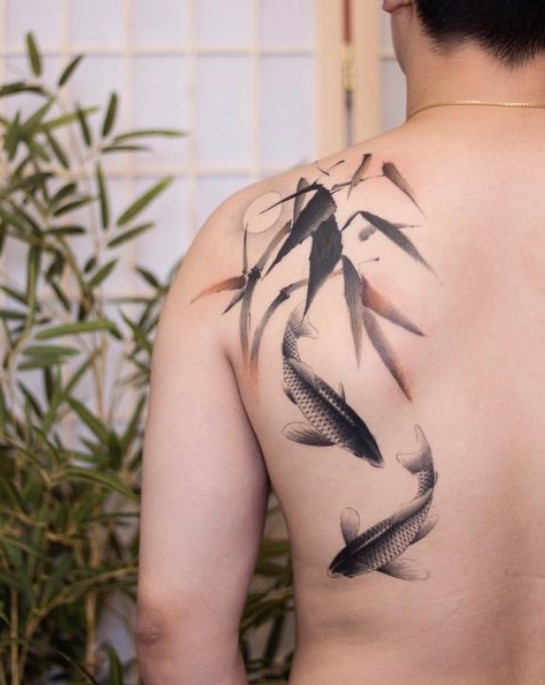
Large Koi Fish Tattoo on Arm
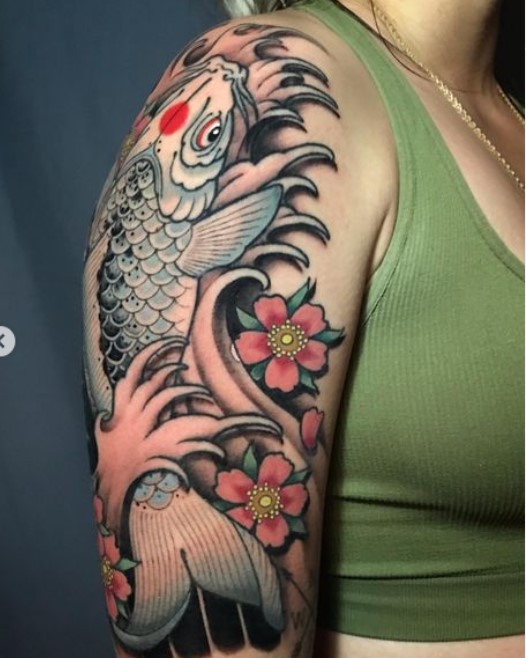
Koi Fish and Lotus Flower Yin Yang Tattoo
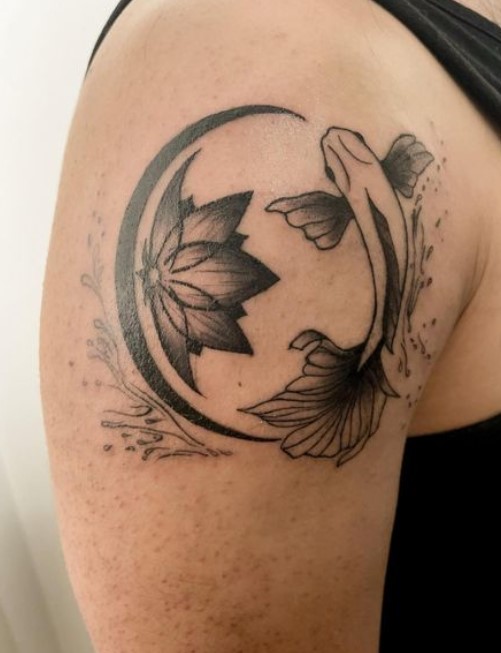
Small Koi Fish Yin Yang Tattoos

Japanese Phoenix Tattoo

Japanese Dragon Tattoos on Thigh
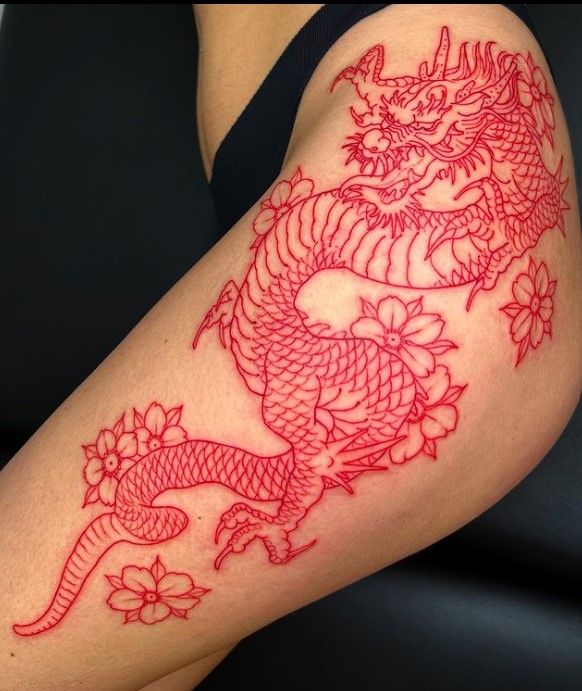
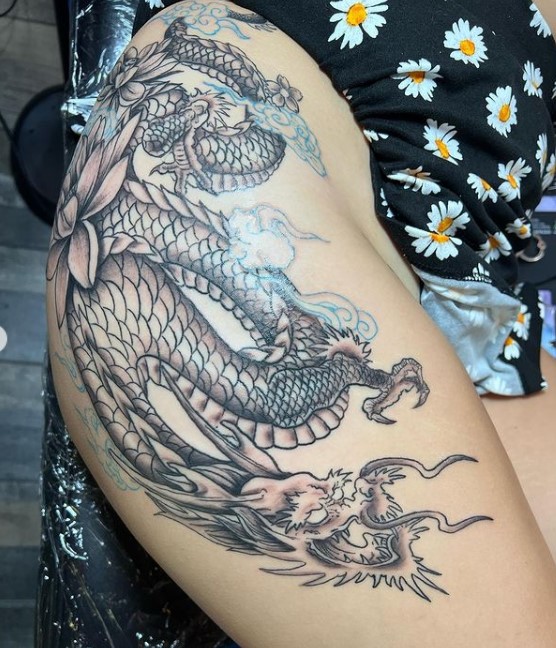
Japanese Dragon Tattoo with Cherry Blossoms (Sakura)

Japanese Dragon Tattoo
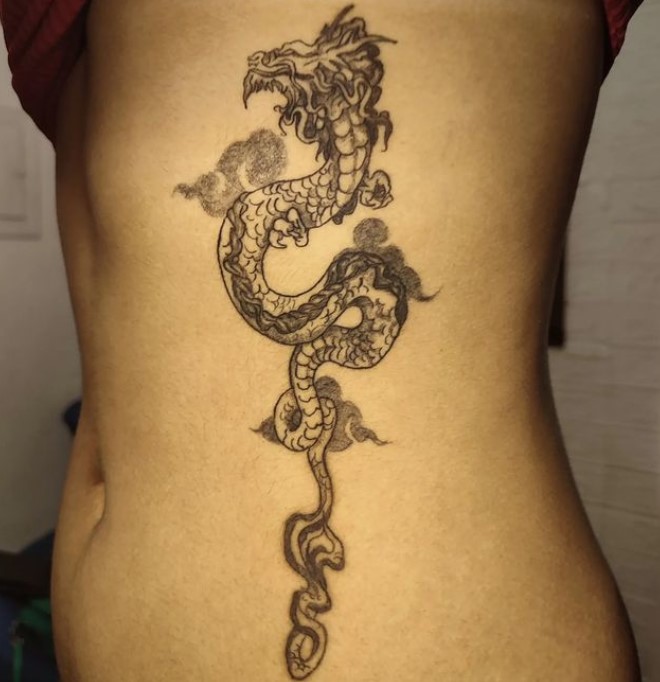
Japanese Cherry Blossom (Sakura) Tattoo on Arm
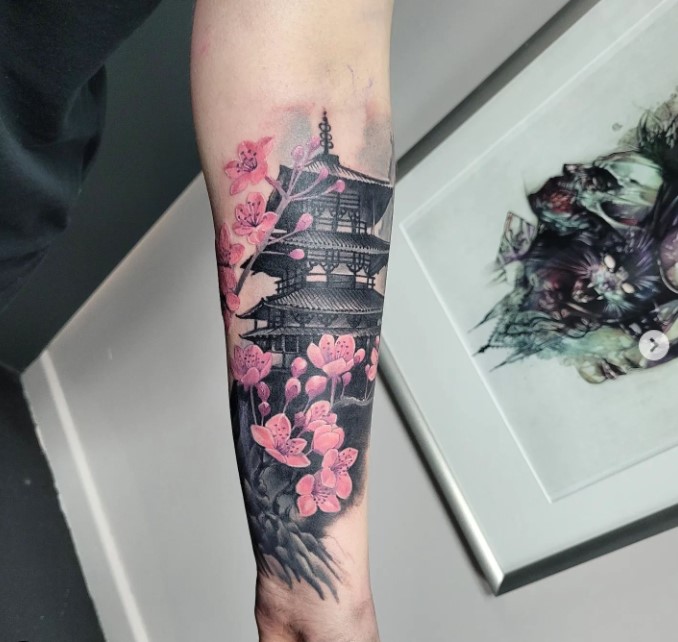
Sakura or Cherry Blossom Tattoo on Arm
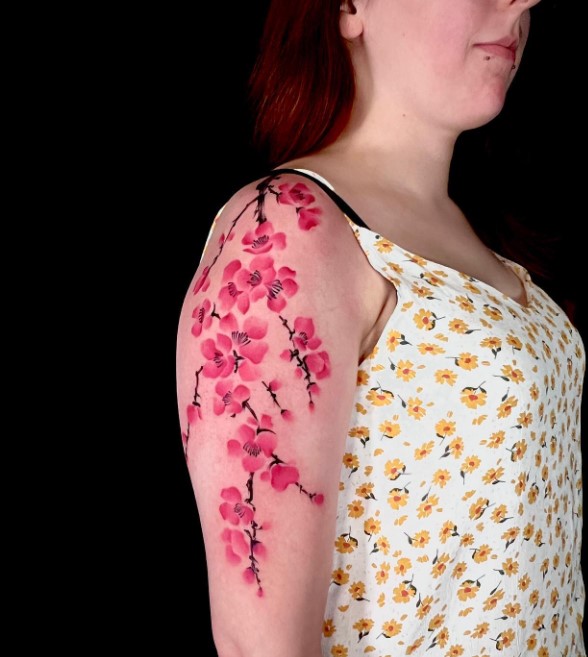
Lotus Flower Tattoo on Chest
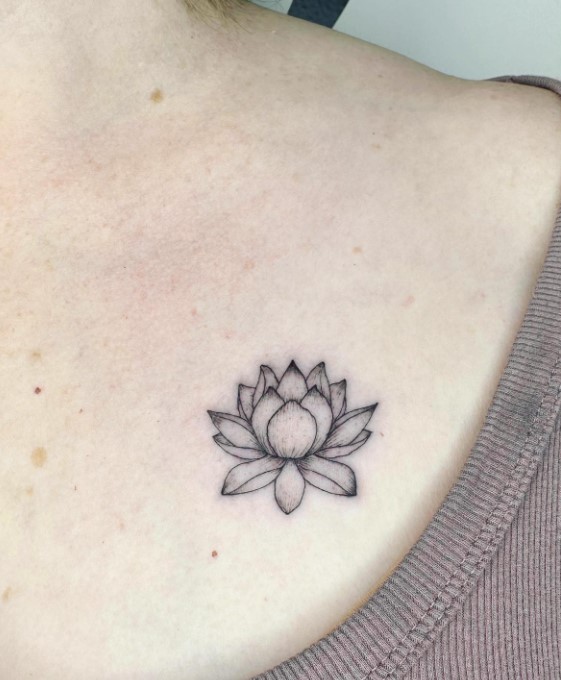
Pretty Peony Flower Tattoos on Thigh
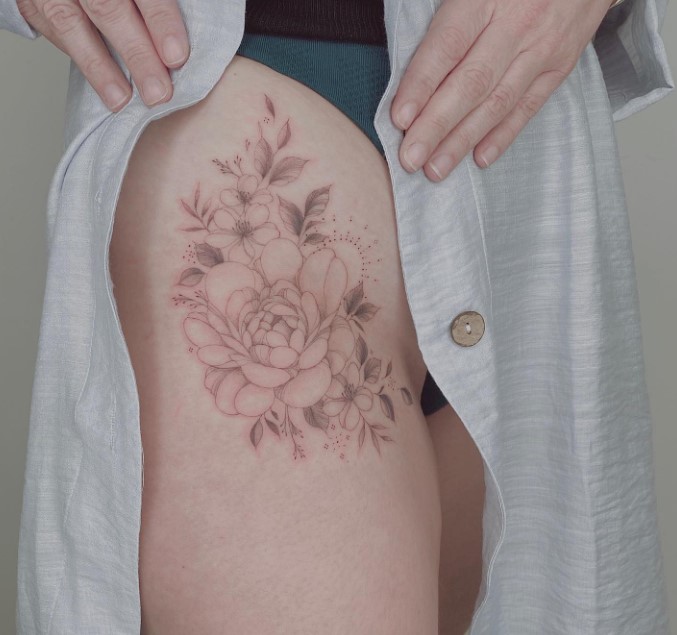

Japanese Peony Flower Tattoo
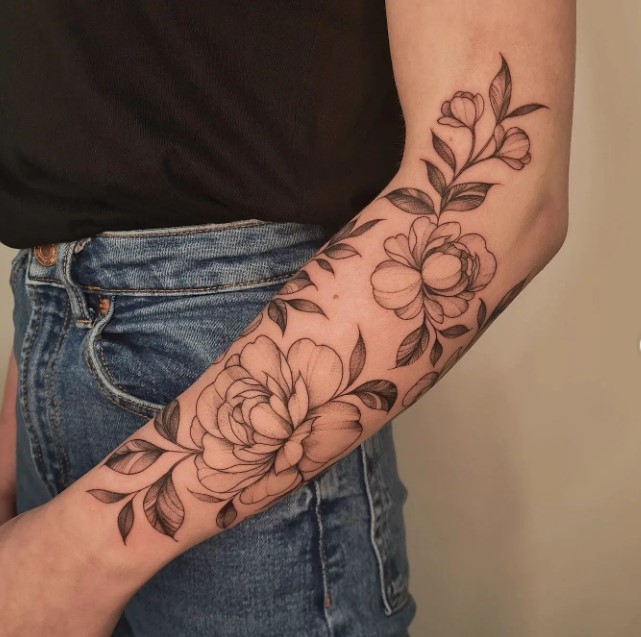
Lotus Flower Tattoo on Abdomen
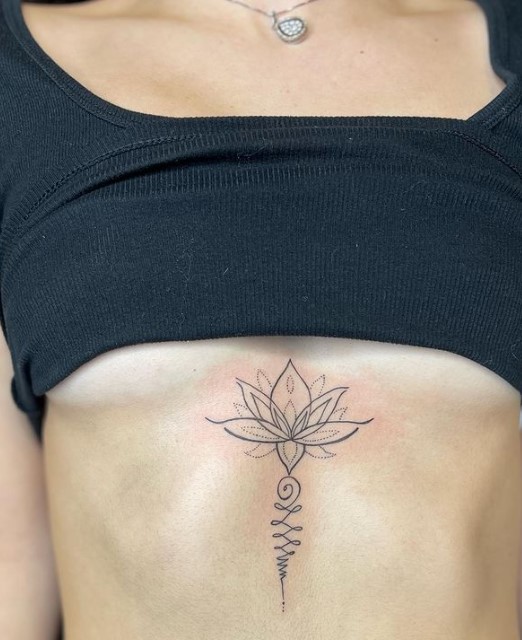
Koi Fish Yin Yang Tattoo on Back
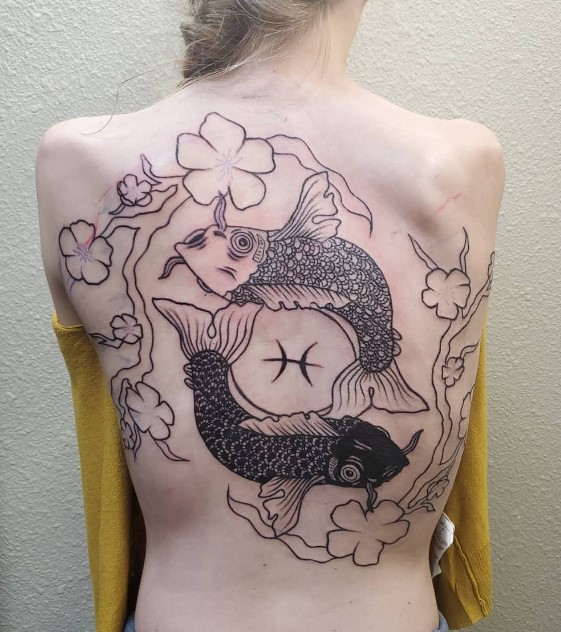
Geisha Tattoos on Thigh
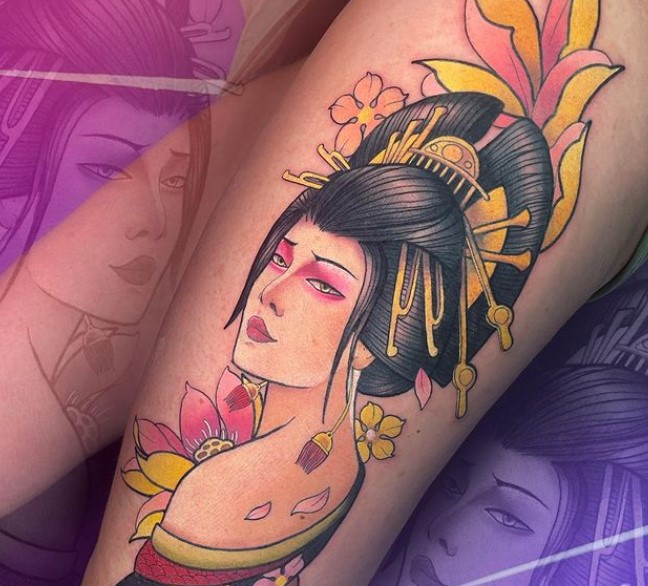

Japanese Phoenix Tattoo on Arm
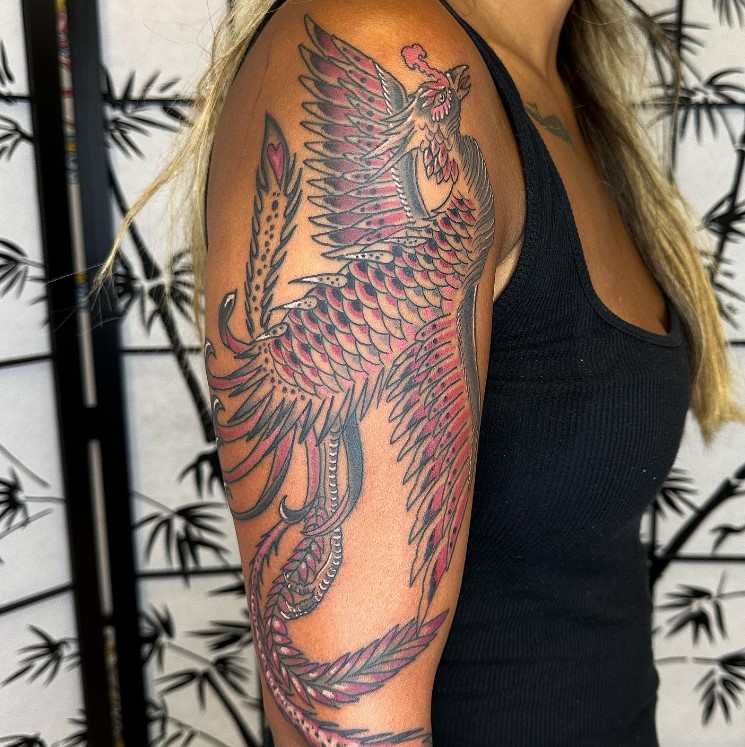
Large Phoenix Tattoo on Back

Butterfly Koi Fish Japanese Tattoo

Japanese Butterfly Tattoo Designs

